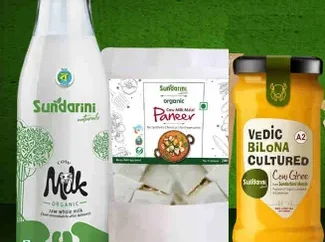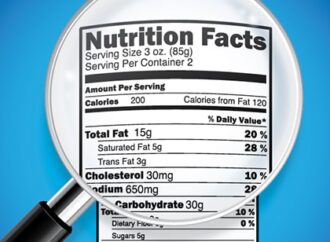We quite often associate healthy eating with a diet rich in green vegetables. However, in the age of adulteration, anything too green might actually be a major red flag. With the rise in incidents of food adulteration, it is pertinent to be cautious when consuming green vegetables and other food items as they may be adulterated with Malachite Green.
Malachite Green is an organic compound that is frequently used in aquaculture as an antibacterial, and for dying purposes. Hermann Fischer created it in 1877 by condensing benzaldehyde and dimethylaniline in a molecular ratio of 1:2 in the presence of sulfuric acid.

Image by W. Oelen
Uses of Malachite Green
It is widely used in India as an antiseptic and for dyeing cotton, wool, jute, and leather. The chemical is also used covertly to colour confectionery. It is also used as a green dye, a counter-stain in histology, and in aquaculture and fish farming for its anti-fungal properties. It’s conventionally used as a dye for materials like silk, paper and leather.
Another interesting use of Malachite Green is in catching pilferers and thieves. The anhydrous powder is sprinkled on the bait, which is usually money. Anyone handling the contaminated money will notice that after washing their hands, they will develop a green mark on their skin that will linger for several days.
Controversy Surrounding Malachite Green
 Malachite Green is popularly used as an antibacterial to treat the fungus Saprolegnia which infects fish eggs in commercial aquaculture, and Ichthyophthirius multifiliisi freshwater aquaria. The primary metabolite Leucomalachite Green (LMG), is commonly found in fish treated with Malachite Green, and this has sparked controversy and prompted government regulation.
Malachite Green is popularly used as an antibacterial to treat the fungus Saprolegnia which infects fish eggs in commercial aquaculture, and Ichthyophthirius multifiliisi freshwater aquaria. The primary metabolite Leucomalachite Green (LMG), is commonly found in fish treated with Malachite Green, and this has sparked controversy and prompted government regulation.
Malachite green, is toxic to humans and is also a carcinogen (an agent with the capacity to cause cancer in humans). Malachite green was used in tests at the Cancer Research Institute and the Tata Memorial Hospital in India, which resulted in the malignant transformation of Syrian hamster embryo cells. It poses a significant risk to employees in the printing and textile industries. Carcinogenesis, mutagenesis, chromosomal fractures, teratogenicity, and respiratory toxicity have all been linked to malachite green.
Malachite Green has been banned in the USA and the UK in food-related applications. This action was precedented by the discovery of Malachite Green in imported seafood by the Food and Drug Administration (FDA). Despite its ban in several nations, it is still used in certain countries with less restrictive laws for non-aquaculture purposes owing to its low manufacturing cost.
In India, the FSSAI has banned the use of malachite green “at any stage of processing of meat and meat products, poultry, and eggs, seafood including shrimps, prawns, or any variety of fish and fishery products”
How to Check for Malachite Green Adulteration?
Some vendors use synthetic colours like malachite green, and wax coating to make fruits and vegetables look shinier and greener. It’s frequently used to give chillies, cucumbers, peas, ladyfinger, and spinach a vivid green colour. The Food Safety and Standards Authority of India (FSSAI) recently released an instructional test video to help determine Malachite Green adulteration in green vegetables using liquid paraffin.
If a cotton piece soaked in liquid paraffin turns green upon dabbing the outer part of the suspected vegetable, it is indicative of Malachite Green adulteration. Similarly, in the case of green peas, if the water in a glass full of peas kept aside for half an hour turns green, then it is indicative of adulteration.
Green and Clean
Deception is everywhere and the spectre of food adulteration haunts us all. Time and again, innocent consumers fall prey to several malpractices in the food industry and are required to be wary of even the most unsuspecting foods. In the words of Christine Pelosi, “Being green and clean is not just an aspiration but an action”.
1 comment Food Manifest
Food Manifest 

















1 Comment
무료웹툰사이트
October 18, 2024, 1:40 pmMateo, once accustomed to the roughness of farm work, now held fragile fragments of knowledge in his hands. <a href="https://조아툰.kr">무료웹툰사이트</a>
REPLY